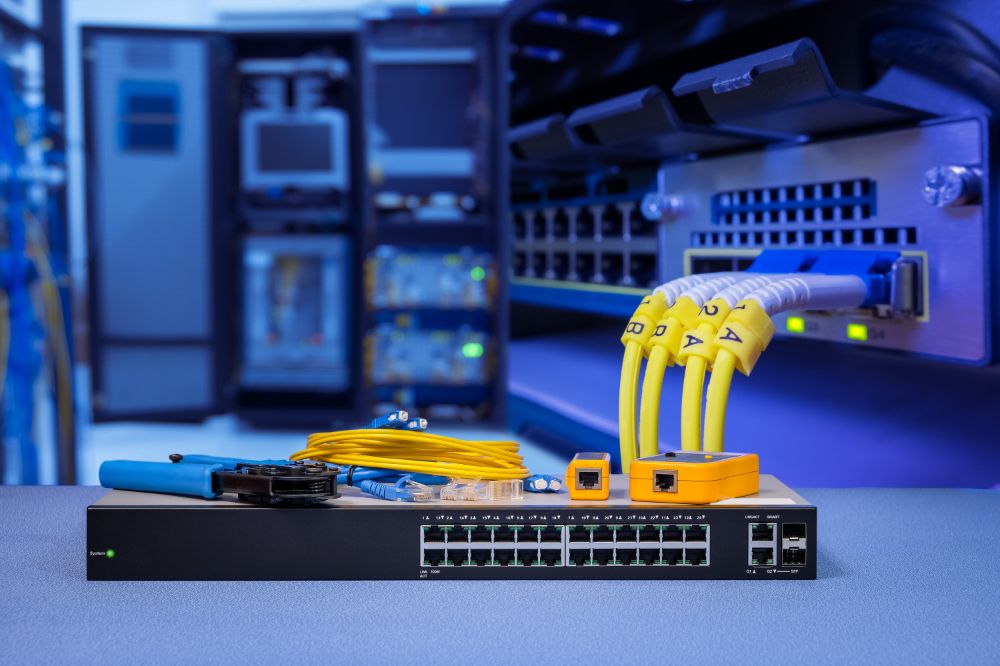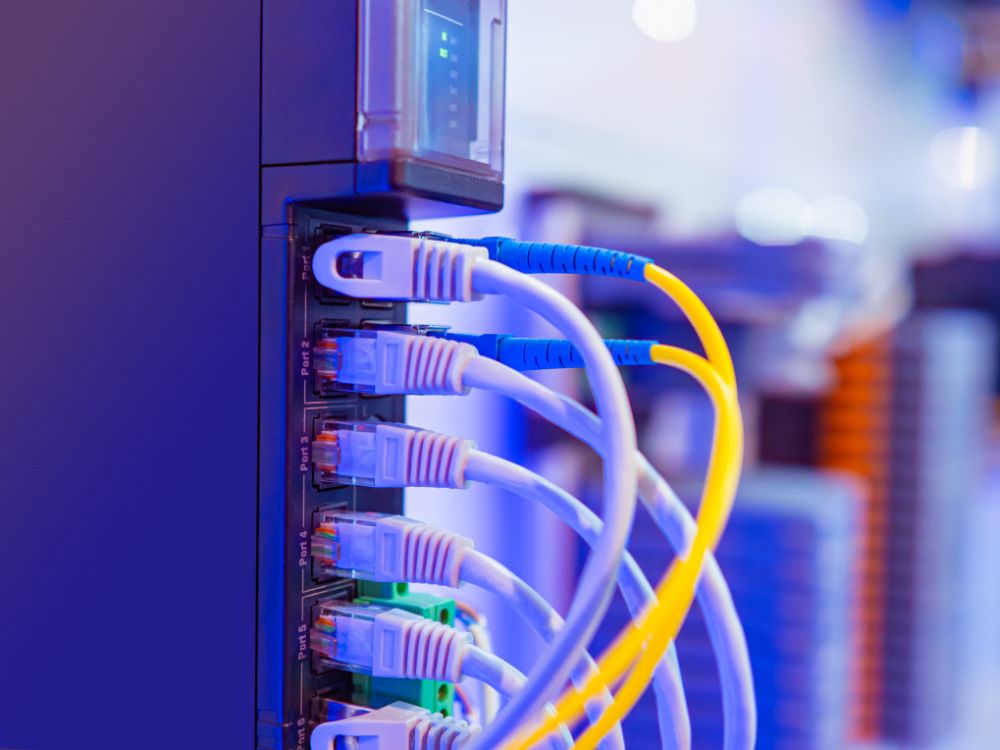Your network isn’t just important to you – it’s the lifeline of your business. That’s…

Which Cisco Switch Model Is Right for You? A Cisco Switch Overview
Have you ever wondered what’s the best Cisco switch model for your business? Figuring out the best Cisco switch models for you can be tricky simply because there are plenty of options, and while that is great news, it is also overwhelming.
Picking the right Cisco switch model is paramount because if you choose the wrong one, you need to purchase a new one soon after due to network scaling concerns. Or, you can purchase one far too large for your network and spend more money than needed. The right switch will work seamlessly with your business, so it’s worth choosing the right one.
In this post, we will help you pick the Cisco switch models most suitable for your business needs. We’ll share insights into how you can better understand the different models, discuss some of our favorite options, and share how you can ultimately choose the right one.
What are Cisco switches?
So, what even are Cisco switches, and how do they factor into the user network access equation? The answer: your switch is a device operating at your OSI model’s data link layer.
You will use your switch to connect your devices within your LAN or local area network. A switch works by using MAC addresses to forward data to specific devices on your network, making them highly efficient.
Network switches also impact your network performance, such as downtime, which is why choosing wisely is so important. Additionally, security and scalability are also considerations.
Ultimately, deciding to work on the Cisco IOS is a great idea because it’s highly reliable and tried-and-true. When you buy a Cisco switch, you can rest assured you are getting a great product.
Overview of Cisco switch models
Modular switches allow you to build onto the switch when your business’s network grows, or fixed configuration switches do not enable growth. Ultimately, it’s up to you if you want to go with modular or data center switches that don’t offer growth. But keep in mind your network’s scalability when you make your decision.
Now, we will walk you through the different types of Cisco switches for campus access networks and beyond. You’ll learn more about Cisco catalyst switches, Nexus switches for data centers, and even Meraki switches.
Catalyst Switches for Campus Networks
If you are looking to build your campus network, consider Catalyst switches. The Catalyst series has a long legacy in the network industry. Consider the following switches if you want to build your campus network.
Cisco Catalyst 2960 Series Switches
These fixed, stand-alone switches help your business maintain security and achieve optimal network availability. This switch is ideal for a medium-sized business looking to make a scalable network foundation.
Cisco Catalyst 3650 Series Switches
This is a type of stackable access layer switch. The hardware is known for its security and application visibility and control, all of which are built into your switch. The security features apply whether you are using the wired or wireless switch.
Cisco Catalyst 3850 Series Switches
Next up is the Catalyst 3850 series switch. More than 30 models are in this series, so you’re sure to find the right fit for your business.
With this switch, you can get converged access with an integrated wireless controller. Plus, the switch supports up to 100 access points and 2000 wireless clients, which is a testament to its power.
Nexus Switches for Data Centers
Think of the Nexus series of switches as Cisco’s answer for data center networking. These switches aren’t for small businesses but are an excellent fit for those in a high-density environment or large-scale data center, thanks to their unique features and capabilities.
Cisco Nexus 9000 Series Switches
This switch is built to bring your data center together with the cloud. It’s known for its scalability, features 400G ports, has robust security in place, and offers intelligent buffers and zero packet drop.
Cisco Nexus 7000 Series Switches
These switches thrive in a high-density environment. There is 550 Gbps bandwidth per slot, the switch runs on Cisco NX-OS, and the product was made with scalability in mind. Plus, it features automation tools for configuration and management.
Cisco Meraki Switches
There are several advantages associated with the Meraki series, mainly that it is cloud-managed, which makes it an appealing option for businesses looking to bring their network into the 21st century.
When you get Cisco Meraki, you can ensure a continuous, high-performing network that is easy to manage. This switch is cost-effective, has a multi-gigabit capacity, robust security, and one dashboard in any environment.
Understanding Cisco switching methods
The key to understanding Cisco switching methods is learning more about which hardware can help you with enterprise-class access deployments—if that’s what you’re seeking. Alternatively, if you have a smaller business, you won’t need a switch that robust.
However, regardless of the size of your business, you should prioritize a switch offering enterprise-class security, as this will give you invaluable peace of mind. We can’t understate the importance of network security, and your switch is a major part of that.
Which Cisco switch model is right for you?
Now that you’re seeking Cisco switching solutions, it’s time to determine which model is right for you. You will find that Cisco offers various resilient and scalable aggregation options, but do your homework to determine which would ultimately be the best fit.
Factors to Consider When Choosing a Cisco Switch Model
It can be a bit overwhelming to consider all the factors when picking a Cisco switch model. That’s why we’ve created this helpful list to help you determine the boxes to check when picking. These factors can be broken down into bandwidth and performance, port count and types, layer of switch, and scalability or future-proofing options.
Bandwidth and Performance
First up is bandwidth. This should be the first thing you consider when you pick a switch. If you choose one that cannot support your network’s bandwidth requirements, you’ll have to upgrade immediately. Furthermore, choosing one that sets your network up for performance success is also crucial.
Watch for throughput, latency, and forwarding rate when picking a switch. These are key indicators that provide you with further insight into the switch’s bandwidth and how it will perform for your network.
Port Count and Types
Next up is the port count and types. This is crucial, especially if you have a larger network.
The count is especially relevant if you’re buying a fixed configuration switch, as you won’t be able to expand on it later to scale. Port count is also important if you have a large network. If you have a smaller network, this won’t impact you too much, but you should still consider it.
RJ-45 ports are for ethernet connections and typically work for standard network devices. QSFPs, or quad small form-factor pluggable ports, support high-performance applications. Because of this, you’ll need this port type if you work somewhere with a high bandwidth requirement.
Last but not least, we have traditional SFP or small form-factor pluggable ports. These are flexible, which is their primary strength.
Layer of the Switch
Next up to consider is what layer switch you need to purchase. There are layer 2 and layer 3 switches, each with a different function, so be sure you’re picking the right one for your business needs.
First, let’s walk through what a layer 2 switch does. You will use a layer 2 switch to read your data traffic on a local area network or LAN. The layer 2 switch only uses MAC addresses, meaning unidentified devices that try to access the network will be denied. How’s that for security?
On the contrary, layer 3 switches are typically used to operate VLANs. They are also known for their ability to improve network security.
If a congested network needs to speed up its data rates, you should look no further than the layer 3 switch. This hardware is also unique because it can connect to devices not within your network without a router.
Scalability and Future-Proofing
You don’t want to purchase yet another switch two years from now, which is why future-proofing is so important. If you only buy your switch for your current network, not the one you are building, you can be making a grave mistake. And that can result in you needing to switch shop again sooner rather than later.
That means you should either select a switch model that has enough bandwidth for your network down the line as it expands or opt for a model with modular expansion options so you can grow your network with your business.
Matching Business Needs With Cisco Switch Models
Remember: what matters most when picking your Cisco switch model is that it aligns with your business goals. It doesn’t matter if you picked the most incredible, high-quality switch if it does not align with what your network needs from it. Because of that, we suggest you do your homework on the different models available.
Maximizing Cisco switch models in networking
Hopefully, now that you know what to keep an eye out for when picking your Cisco switch, you will have an easier time doing so. Ultimately, it’s important to decide, based on your network requirements and expectations, how you believe the network will grow.
How Network Craze Can Help
Want to explore Cisco’s switch offerings with the help of a professional? Network Craze is available to answer any and all questions you have.
Reach out today to discuss your switch needs.





